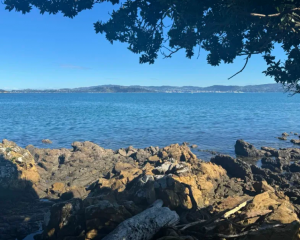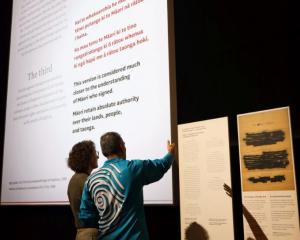It could be two direct hits in a row for the West Coast, as models for Cyclone Gita show the storm moving further south.
That puts it in line to hit the same areas that were battered by Cyclone Fehi two weeks ago. Buller, Westport and Nelson were all badly affected, with evacuations, states of emergency and school closures caused by flooding.
Meanwhile, heavy rain of between 75mm and 100mm was forecast for Fiordland from 4pm on Sunday, the MetService said.
Heavy rain watches were in place for Marlborough, Buller, Westland, Canterbury and North Otago from early Tuesday until Wednesday afternoon.
A severe gale watch was also in place for Nelson, Buller, Westland, the Canterbury High Country north of Tekapo, Taranaki, Whanganui and Wellington from Tuesday afternoon until Wednesday.
Tropical Cyclone Gita is a strong Category 3 tropical cyclone as it begins to turn toward New Zealand.
While earlier tracking models had Gita aiming for Wellington, Cook Strait and the upper South Island, the latest models show the cyclone making landfall squarely on the South Island.
Heavy rainfall and violent winds are expected across a wide swathe of the northern South Island on Tuesday night, followed by heavy rain in the central South Island.
But forecasters say the storm's final track is still uncertain. It could split when it hits the Southern Alps, ending up twice as wide by Wednesday and spreading its energy over a greater area.
That means parts of New Zealand that were expecting gales could have calm weather, and other areas could get unexpectedly severe weather - so people are warned to keep an eye on forecasts.
Gita was south of New Caledonia on Sunday, with a maximum sustained wind speed of 111km/h, according to WeatherWatch.co.nz. That was likely to weaken to around 90km/h on Sunday.
Which areas will be worst affected?
At the moment the West Coast, the Southern Alps (especially the northern half) and the upper South Island. Rain, heavy at times, may also spread into the eastern South Island for 24 hours. The lower and western North Island is also exposed - and as the low morphs into a new system other regions might be impacted.
What is happening today?
Gita should stay a Category 2 tropical cyclone in the Tasman Sea on Sunday and start turning more southwards. Sunday's tracking models are predicting the worst of the storm will move further south than previously thought - although this could change. All of New Zealand is currently at risk of being affected by Cyclone Gita, but the worst of the winds will cover an area of 900kms in diameter. This means around half of New Zealand should be on the outside of the worst part.
How far could weather warnings spread?
MetService's Severe Weather Outlook for Saturday indicated central New Zealand and the upper and western South Island were most at risk. Northern New Zealand might see gales but the tracking models don't yet agree on whether this will happen.
Where will the worst wind and rain be?
This storm is expected to split up when it hits the South Island mountains, making it hard to be precise. Current models suggest the worst winds will be in the Southern Alps, West Coast and Cook Strait area. It may also be windy along the North Island's west coast as far north as Auckland and Northland. Rain will be heaviest over the South Island.
Is Gita going to be a repeat of Giselle or Bola?
No two cyclones are the same - they are as unique as human beings. Cyclone Gita is following a similar track to the recent Cyclone Fehi now but is more powerful. Those directly in the path of the storm should be prepared for floods, slips, power cuts, road closures and wind damage. Big seas and damaging waves will also cause coastal flooding and damage directly where the centre of the storm comes in, which still looks to be the north western corner of the South Island on Tuesday night - this could still change.
How far south will Gita go before losing "tropical cyclone" status?
WeatherWatch's Philip Duncan and Niwa's Ben Noll earlier predicted Gita could become the southernmost tropical cyclone (cyclone with a warm core). That's looking less likely, but it will get further south than most tropical cyclones. The status change won't make a difference to wind speeds - these will still probably be low Category 2 status, moving to high Category 1 as it makes landfall. Gusts in the mountains could be much stronger - up to 200km/h.











